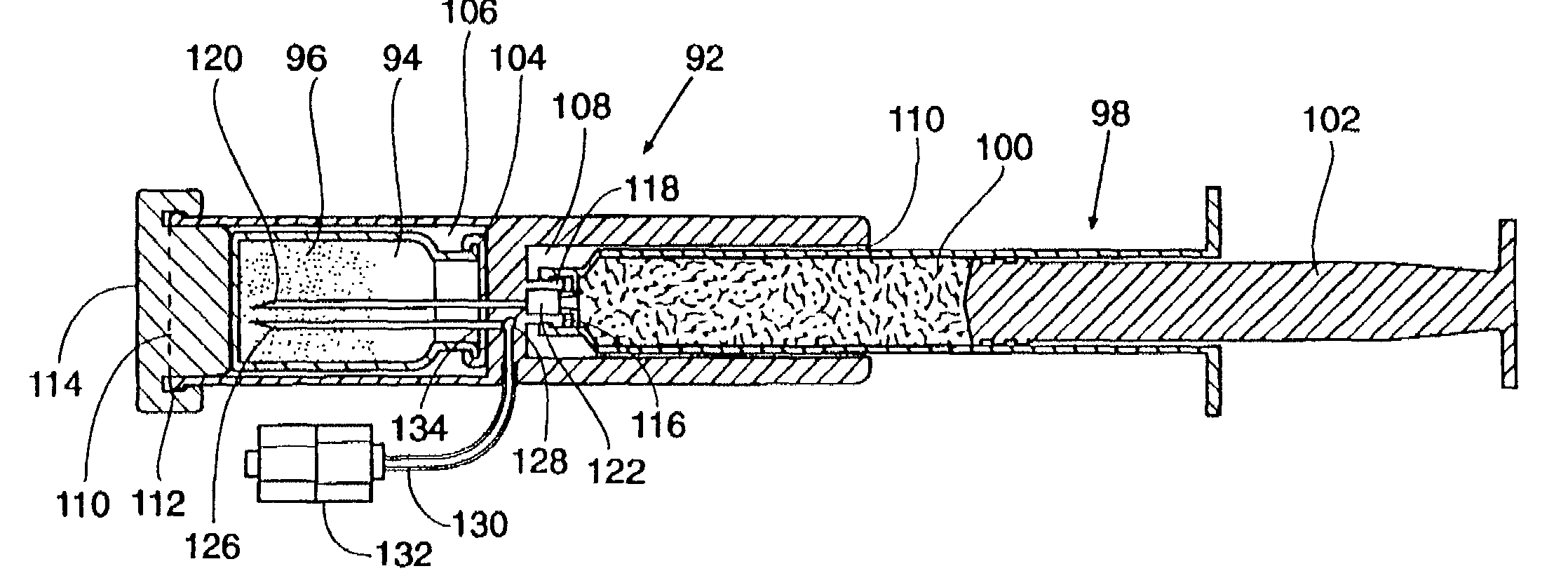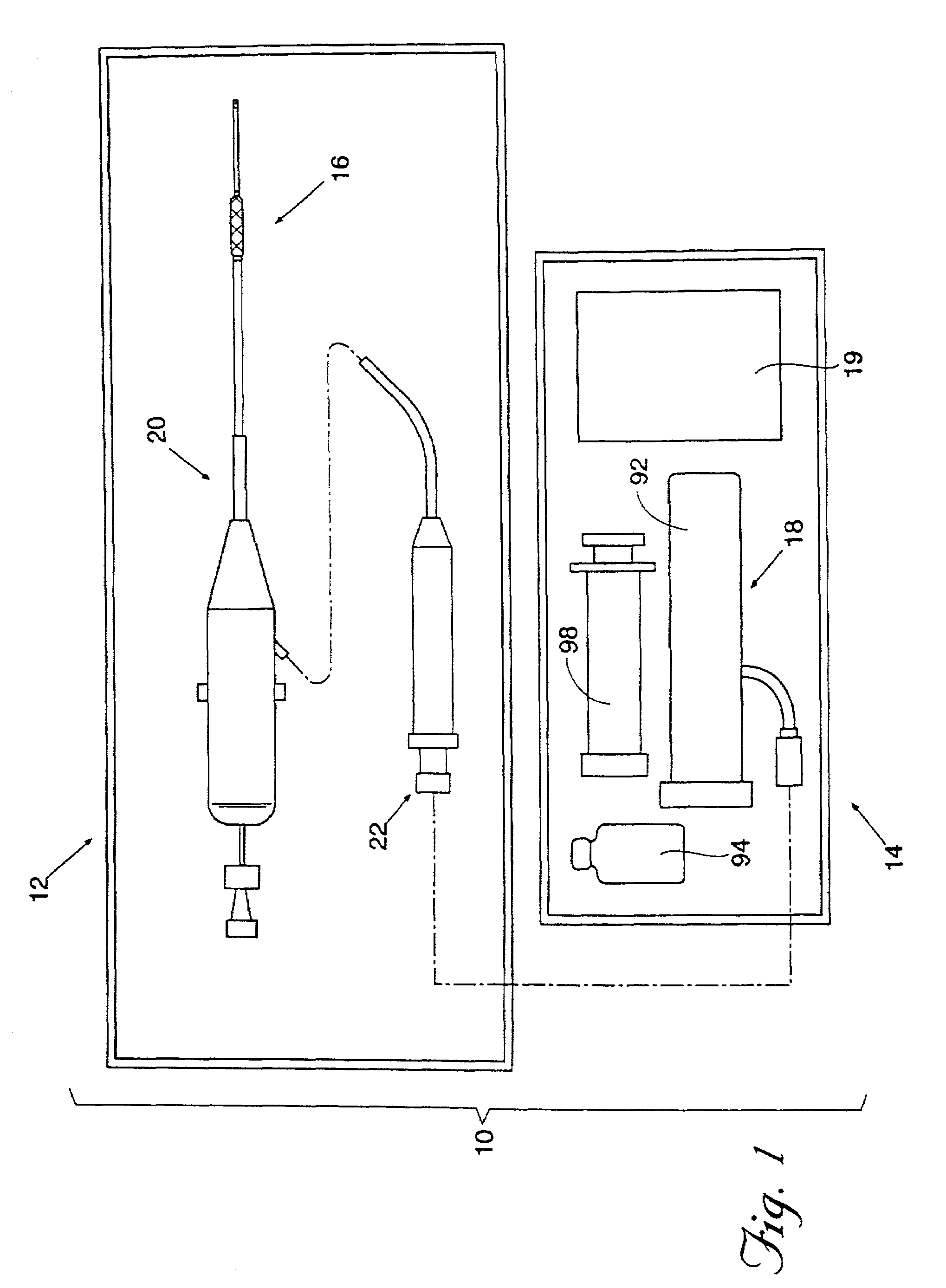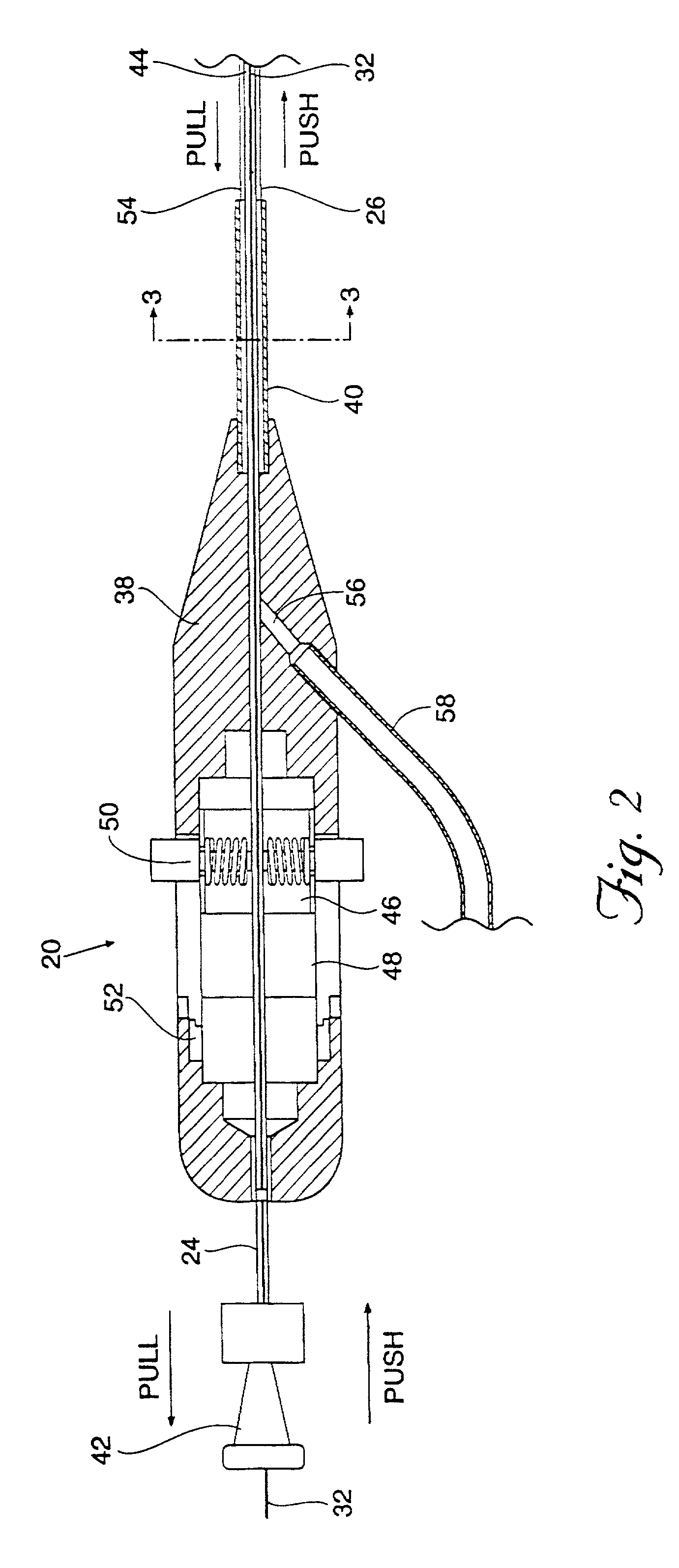Systems, methods, and compositions for achieving closure of vascular puncture sites
- Summary
- Abstract
- Description
- Claims
- Application Information
AI Technical Summary
Benefits of technology
Problems solved by technology
Method used
Image
Examples
example
[0132]Carbonate Buffer / Tris Buffer Formulations
[0133]Albumin (Human 25%, Plasbumin®-25 manufactured by Bayer Corporation) was buffered using Sodium Carbonate Anhydrous (Na2CO3) (FW 106.0) (“Carbonate Buffer”) mixed with Tris-hydroxymethylaminomethane (C4H11NO3) (FW 121.1) (“Tris Buffer”). The buffered albumin formulations (2 cc) were mixed with 2 cc of the SunBio PEG (0.45 g of PEG suspended in 2.2 cc of water), to provide 17% w / w PEG solids. The components were mixed in the manner described in Example 1. The pH of the buffered albumin formulation (albumin plus buffer material) and the gelation time (as described above) and were recorded.
[0134]Table 1 summarizes the results:
[0135]
TABLE 1AlbuminCarbonateTrisDeviceGelling(HumanBufferBuffer(OutsideTime25%)(ml)(grams)(grams)pHDiameter)(Seconds)2000.2178.37 Fr112000.2908.57 Fr7–8200.0750.1458.77 Fr5–6200.1380.1459.07 Fr2–3
[0136]Table 1 shows rapid gelation times. This is believed due to the larger concentration of multiple functionality ...
embodiment
Representative Embodiment
[0140]In a representative embodiment employed with a 7 FR device, the vial 94 contains 600 mg±10% of lyophilized SunBio PEG-SG (4-arm polyethylene glycol tetrasuccinimidyl glutarate—MW 10,500±1500). The lyophilization process will be described in detail later. The syringe 98 contains 6 ml of water and 2 ml of buffered 25% w / w human serum albumin, USP. The buffered 25% albumin is made by adding 0.217 g. of Tris-hydroxymethlaminomethane (C4H11NO3) (FW 121.1) (TRIS Buffer) to 20 cc of Bayer Plasbumin®-25 to obtain a pH between 8.0 and 8.7, most preferably between 8.3 and 8.5. This composition is described in Table 1.
The Lyophilization Process
[0141]The PEG material is moisture sensitive, i.e., it can be subject to rapid degradation upon exposure to moisture. This moisture sensitivity can limit the stability of the PEG material and thus its long-term storage or “shelf life.” Therefore, as previously noted, it may be desirable that the PEG material be lyophilized ...
PUM
 Login to View More
Login to View More Abstract
Description
Claims
Application Information
 Login to View More
Login to View More - R&D
- Intellectual Property
- Life Sciences
- Materials
- Tech Scout
- Unparalleled Data Quality
- Higher Quality Content
- 60% Fewer Hallucinations
Browse by: Latest US Patents, China's latest patents, Technical Efficacy Thesaurus, Application Domain, Technology Topic, Popular Technical Reports.
© 2025 PatSnap. All rights reserved.Legal|Privacy policy|Modern Slavery Act Transparency Statement|Sitemap|About US| Contact US: help@patsnap.com



